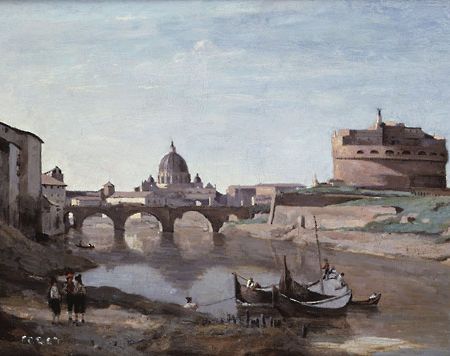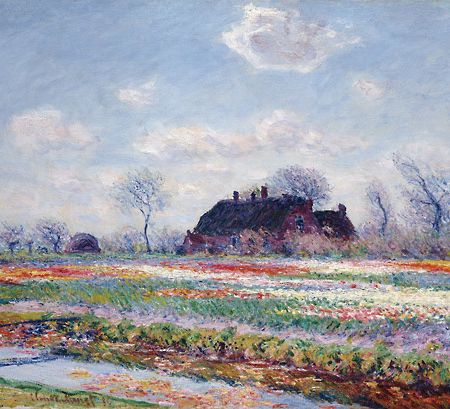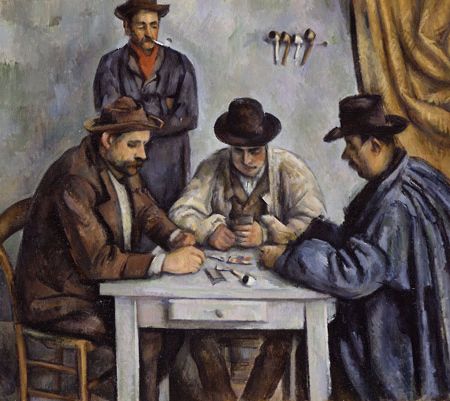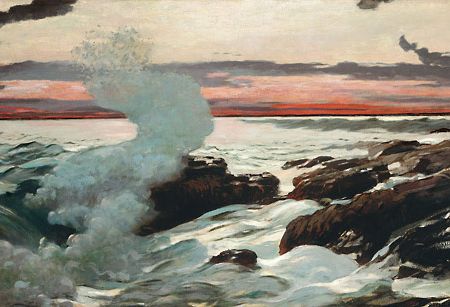Until the 19th of August 2007 the famous MET in New York, one of the most prestigious and famous museums in the world, will be hosting an exhibition of Impressionist and early modern paintings, reuniting over 65 masterpieces by artists such as Degas, Monet, Pissarro, Renoir, Sargent, as well as Cezanne, Picasso, Eakins, Seurat and many others. Such a brillian display of works could only come from a famous collection, regarded with awe in the world of art lovers.

Undertow, 1886
Yet, the works of the MET exhibition come not from own, but from two famous and rival collectors. The two are Robert Sterling Clark (1877 - 1956), who was the founder of the Sterling and Francine Clark Art Institute in Williamstown, Massachusetts, and Stephen Carlton Clark (1882-1960), who was a trustee and then a donor of the MET. The two brothers - for it wasn't just a concidence - managed to assemble two of the most important collections of Impressionist and early modern art ever in private hands, and the show presents the best of the two.

The Castel Sant'Angelo, Rome, ca. 1835-40
Side by side, Degas and Cezanne, Monet and Seurat, Pissarro and Matisse, Renord and Hopper present how the two imagined and conceived their collections, often battling for some works which they both praised. It is an unique chance to examine the life work of the two heirs of the Singer Sewing Machine, famous world wide. The two were also patrons of art in the US and especially in New York, but their prefferences when it came to contemporary artists were usually opposed. The "Impressionist and Early Modern Paintings: The Clark Brother Collect" also marks the 50th anniversary of the Sterling and Francine Clark Art Institute.

Tulip Fields at Sassenheim, near Leiden, 1886
The story of the two brothers and collectors is just as interesting as the richness and variety of their collections. Born and raised in New York, in an upper class family, the two had the chance of a culturally rich education, discovering art in their youth. At just 22, Sterling decided to travel the world, settling in Paris in 1910. He was attracted to the Parisian art, but also inlove with a French actress, whom he eventually married. His brother, Stephen, chose to remain at home, managing his family vast financial and business empire and continuing his discovery of art.

The Card Players, 1890-92
The two would eventually start collecting in their thirties. Sterling for one bought and renovated an old town house in Paris, and hoping to transform it into a splendid museum began his frenetical search for masterpieces of old masters and Impressionist painters. Stephen preffered modern art, especially after wittnessing the Armory show of 1913, which opened the doors of a new art world for him. The collection found it's home in Stephen's new house in Manhattan. The brothers kept in touch, but they were also rival collectors, who only wanted the best. Yet, their close relationship would end in the 1920's , where disputes about how the distribute their wealth and trusts led to arguments. Very soon, the two became estranged and ver spoke to eachother again.

West Point, Prout's Neck, 1900
Sterling would much later see his early dream come trough, in 1955, when he founded the Sterling and Francince Clark Art Institute in Williamstown, Massachusetts. After decades of quietly buying the best works that he could find, his varied and rich collection was by all means a shock to dealers and specialists, being one of the best in the world. On the other hand Stephen continued to buy what he called "good pictures", donating many of them to several museums and especially to the MET, especially in the 1960's.

House by the Railroad, 1925
Photo : metmuseum.org
2007-07-19

































